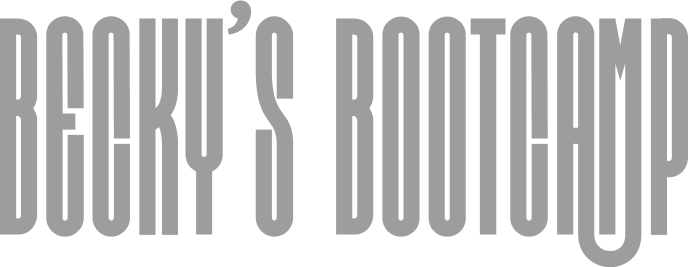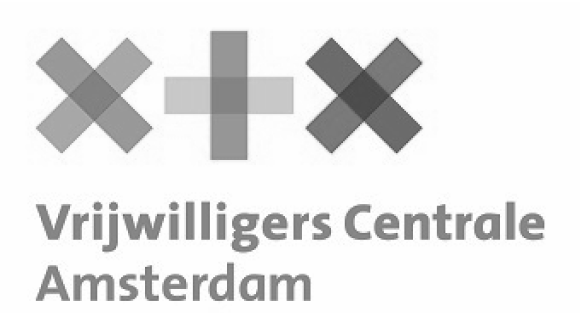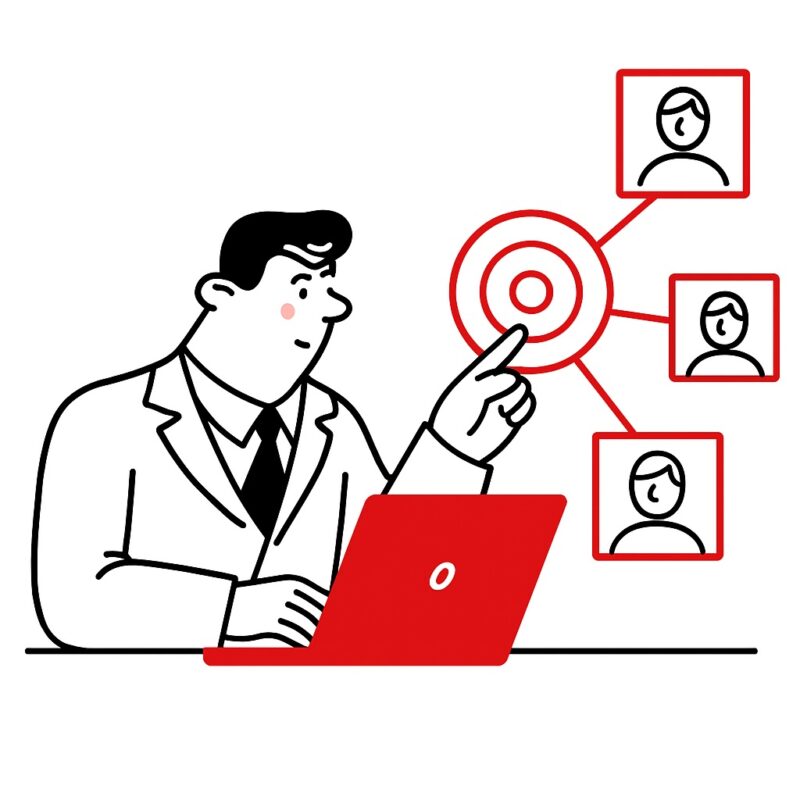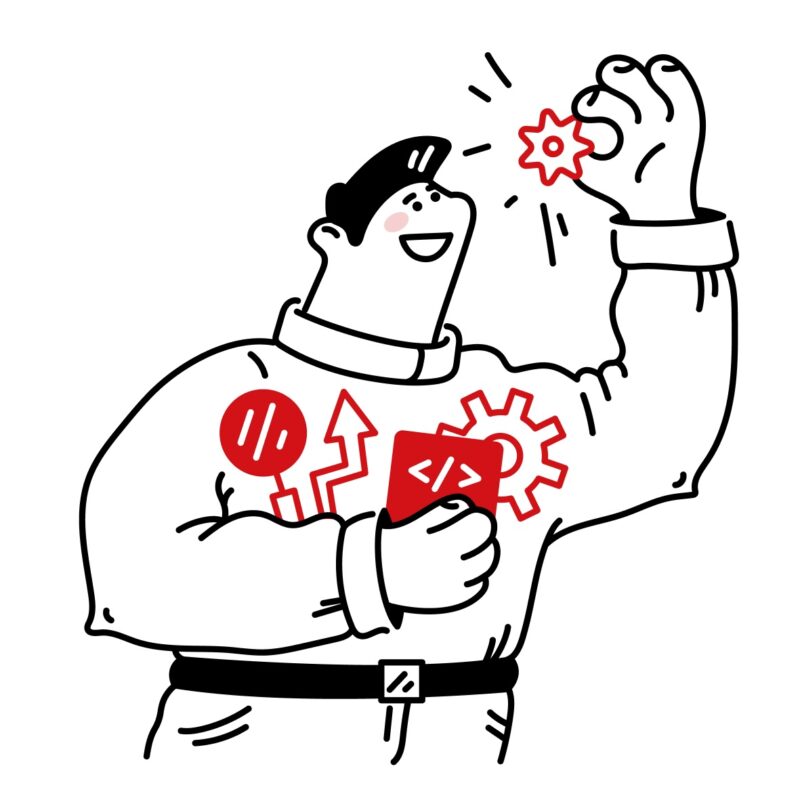Design thinking is a human-centered approach that solves complex problems and creates innovative solutions through an iterative process.
About design thinking
Design thinking is an approach that creatively and human-centered solves complex problems and accelerates innovation. Instead of thinking directly in terms of solutions, design thinking starts from the end user. Design thinking allows organizations and teams to gain deeper insights, improve user experiences and develop innovative solutions to a variety of challenges.
Through careful observation, experimentation and continuous testing, solutions are created that add real value. Design thinking is broadly applicable in a variety of contexts, including education, project management and professional development, where participants can actively apply skills and methodologies to solve problems in creative ways. It is a powerful approach for brands, teams and organizations that want to innovate with impact. In practice, design thinking leads to concrete results by developing, testing and implementing solutions in real situations.
What is design thinking?
Design thinking is an iterative process consisting of five phases: empathy, definition, ideation, prototyping and testing. The first phase, which focuses on empathy, is all about understanding the user and taking the end user’s perspective. During this phase, information is gathered to identify the user’s need. In the second phase, it is important to clearly define the problem; the right problem must be defined for the next steps to be effective. Formulating the problem definition helps to get the user’s core need in focus.
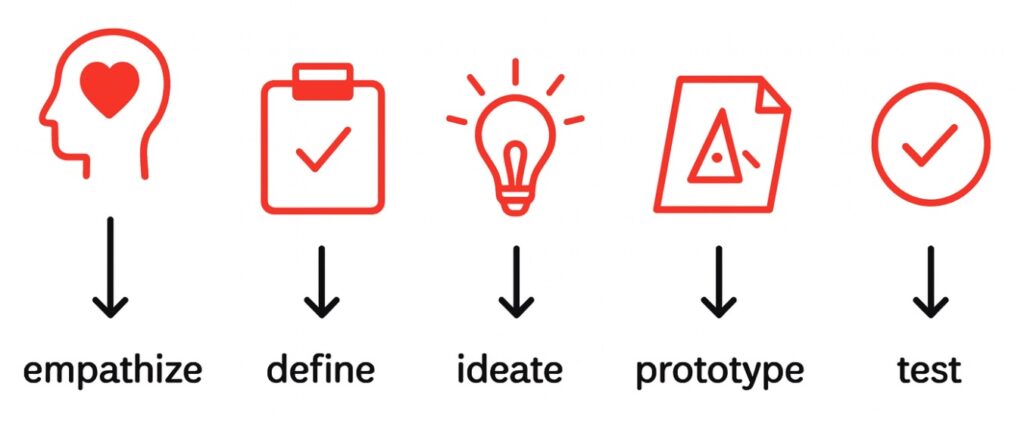
Design thinking uses a variety of methods and principles, applying theories from psychology, creativity and innovation. The theory behind design thinking emphasizes the importance of a human-centered approach and the iterative design of solutions. During the process, participants develop skills such as problem definition, brainstorming, prototyping and recognizing their own thinking patterns. Anyone can be a designer; designers play a central role in generating ideas, creating solutions and designing products or services. The process encourages creating innovative concepts and generating ideas (generate ideas) to solve complex problems and arrive at appropriate solutions.
During prototype testing, it is important to recognize limitations and analyze what did not work in previous iterations. In the final phase of the process, user feedback is gathered to further improve the design, after which the next phase may be to implement the solution in practice. The iterative nature of design ensures that solutions are continually refined.
Within design thinking, it is essential to initially assemble a multidisciplinary project team so that different perspectives contribute to developing creative solutions. Students and education professionals play an important role in applying design thinking within education, encouraging a changing way of thinking. Formulating the right problem, designing solutions and implementing them are crucial steps in the process.
What to expect
- Customized workshops and sessions (physical or remote)
- Practical application of the five-step model
- Customer interviews, audience analysis and persona mapping
- Customer journey mapping and service blueprinting
- Idea generation with creative techniques
- Prototyping and validation of concepts
- Develop skills that are immediately applicable in practice
- Working with different methods and principles within design thinking
- Applying theory in the sessions to inform the design process
- Engaging students and applying design thinking in education
- Collaborate in a multidisciplinary project team for innovative solutions
Sample applications
- Development of new propositions or services: A project team made up of various disciplines is initially assembled to formulate the right problem from different perspectives and find out the user’s need. By working together and generating ideas, they create a design for a new product or service. While designing and testing prototypes, they recognize limitations and analyze what did not work so that in the next phase they can come up with creative solutions and implement them in practice.
- Brand positioning or rebranding processes: By applying design thinking methods and principles, a new way of thinking is encouraged within the team. Students or employees are actively involved in generating ideas and creating a new design for the brand identity. In practice, the new brand is then implemented and tested, using feedback from the final phase to further refine the design.
- Optimization of customer journey and digital touchpoints: By analyzing the customer journey from the user’s perspective, bottlenecks and needs are initially identified. The project team generates ideas and develops prototypes, recognizing constraints during testing and creating solutions that can be implemented immediately in practice.
- Innovation in Healthcare or Public Sector: Education involves students in solving complex problems by working with professionals to develop creative solutions. By applying design thinking theory and methods, they develop skills that can be directly applied in practice, such as formulating the right problem, creating prototypes and implementing solutions in healthcare.
- Strategy development for scale-ups: By using design thinking principles and involving a multidisciplinary project team, innovative strategies are designed. In the next phase after prototyping, the best solutions are tested and further developed so that they can be effectively implemented and contribute to the growth of the organization.
- Validation of business models or MVPs: By applying design thinking methods and involving students or users in the process, new ideas are generated and prototypes are created. During the final phase, these prototypes are tested, limitations are recognized and what did not work is analyzed so that the design can be further improved and successfully implemented in practice.
Our working method
- Empathy & research – The first phase is all about taking the user’s perspective; through interviews, data and observation, you gain insight into their needs and experiences.
- Problem definition – Define the right problem by sharply identifying needs, frictions and opportunities; a well-defined problem is essential to achieving effective solutions.
- Idea generation – Generate ideas in creative sessions with input from brand, market and user; creating creative solutions is central to finding innovative answers.
- Prototyping – Design and create prototypes by developing ideas into testable concepts or wireframes; recognize and evaluate constraints to improve the design.
- Testing & Validation – In the final phase, learn from feedback and adjust based on real users; implement the solutions and prepare for the next phase of the process.
While going through these steps, skills, methods and principles of design thinking are indispensable, and working in a multidisciplinary project team is crucial for success. Involve students actively in the process and apply design thinking in teaching to enrich the learning process. By developing a new way of thinking and recognizing what didn’t work initially, designers and design teams can create better and better solutions.




